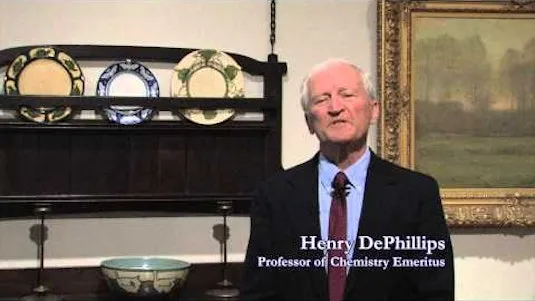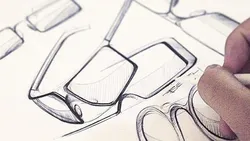
Science in Art: The Chemistry of Art Materials and Conservation 
This course explores the chemistry of art materials and conservation, examining how artists use materials to create visual effects. It covers topics such as the selection of materials, image formation, color, emphasis, shape, and size. Through this course, students gain an understanding of the science behind art. ▼
ADVERTISEMENT
Course Feature
![]() Cost:
Cost:
Free
![]() Provider:
Provider:
Edx
![]() Certificate:
Certificate:
No Information
![]() Language:
Language:
English
![]() Start Date:
Start Date:
Self paced
Course Overview
❗The content presented here is sourced directly from Edx platform. For comprehensive course details, including enrollment information, simply click on the 'Go to class' link on our website.
Updated in [March 05th, 2023]
This course, Science in Art: The Chemistry of Art Materials and Conservation, provides an overview of the chemistry of art materials and conservation. It explores how artists create visual effects by selecting materials that allow image formation, and that lend color, emphasis, shape, and size to the object created. It also examines the physical interventions that are possible to maintain, preserve and protect the work as the artist intended. The course draws on the ideas of Leonardo da Vinci, who suggested that the study of art should include a knowledge of materials, the chemistry of colors, the mathematics of composition, the laws of perspective, and the illusions of chiaroscuro. Through this course, students will gain a better appreciation of an artwork and its creation, as well as confidence that it is the artist’s work.
[Applications]
Upon completion of this course, students will have a better understanding of the chemistry of art materials and conservation. They will be able to identify the materials used in artworks and understand how they interact with each other. They will also be able to recognize the physical and aesthetic qualities of art materials and how they can be preserved over time. Additionally, students will be able to apply the principles of conservation science to maintain and protect artworks. Finally, they will be able to apply the knowledge of materials, chemistry of colors, mathematics of composition, laws of perspective, and illusions of chiaroscuro to create and appreciate artworks.
[Career Paths]
The three to four job position paths recommended for learners of this course are:
1. Art Conservation Scientist: Art conservation scientists use their knowledge of chemistry and materials science to preserve and protect works of art. They analyze the materials used in the artwork, develop conservation protocols, and use their expertise to restore and protect the artwork. This field is growing rapidly as more and more works of art are being preserved and protected.
2. Art Materials Scientist: Art materials scientists use their knowledge of chemistry and materials science to develop new materials for use in art. They analyze existing materials, develop new materials, and use their expertise to create new and innovative materials for use in art. This field is growing rapidly as more and more materials are being developed for use in art.
3. Art Historian: Art historians use their knowledge of art and art history to analyze and interpret works of art. They analyze the materials used in the artwork, the techniques used to create the artwork, and the historical context of the artwork. This field is growing rapidly as more and more works of art are being studied and interpreted.
4. Art Educator: Art educators use their knowledge of art and art history to teach students about art. They teach students about the materials used in art, the techniques used to create art, and the historical context of art. This field is growing rapidly as more and more students are interested in learning about art.
[Education Paths]
Three degree paths that are recommended for learners of this course are:
1. Bachelor of Science in Art Conservation: This degree program focuses on the preservation and restoration of artworks, and provides students with the knowledge and skills to identify, analyze, and treat art materials. Students learn about the chemistry of art materials, the mathematics of composition, and the laws of perspective, as well as the principles of conservation and restoration. This degree program is becoming increasingly popular as the demand for art conservation professionals grows.
2. Master of Science in Art History: This degree program focuses on the history and theory of art, and provides students with the knowledge and skills to analyze and interpret artworks. Students learn about the history of art, the development of art movements, and the cultural and social contexts of art. This degree program is becoming increasingly popular as the demand for art historians grows.
3. Doctor of Philosophy in Art Conservation: This degree program focuses on the preservation and restoration of artworks, and provides students with the knowledge and skills to identify, analyze, and treat art materials. Students learn about the chemistry of art materials, the mathematics of composition, and the laws of perspective, as well as the principles of conservation and restoration. This degree program is becoming increasingly popular as the demand for art conservation professionals grows.
Course Provider

Provider Edx's Stats at AZClass
This course examines the chemistry of art materials and conservation, examining how artists use materials to create visual effects. This course will explore the chemistry and conservation of art materials from a scientific perspective. They will examine the materials that artists use to create visuals and how they are used to embody the artist's intent. They will also discuss how materials degrade over time and what physical interventions can be used to maintain, preserve and protect works. They will also discuss how materials degrade over time and what physical interventions can be used to maintain, preserve and protect works.
Discussion and Reviews
0.0 (Based on 0 reviews)
Explore Similar Online Courses

Advanced CSS Concepts

Crime Justice and Society

Python for Informatics: Exploring Information

Social Network Analysis

Introduction to Systematic Review and Meta-Analysis

The Analytics Edge

DCO042 - Python For Informatics

Causal Diagrams: Draw Your Assumptions Before Your Conclusions

Whole genome sequencing of bacterial genomes - tools and applications

Industrial Design Sketching: Learn to Sketch Products in Perspective & Boost Your Creativity

Colouring With Markers - The Fundamentals

Drawing Comics: A Beginners Guide
 Related Categories
Related Categories
Quiz
 Submitted Sucessfully
Submitted Sucessfully
1. What is the goal of this course?
2. What did Leonardo da Vinci believe should be studied in art?
3. What is the painting on the course banner?


Start your review of Science in Art: The Chemistry of Art Materials and Conservation